 Are Weight Loss GLP-1 Drugs Like Ozempic Safe?
Are Weight Loss GLP-1 Drugs Like Ozempic Safe?
Ozempic has been all over the news for now. Doctors recommend it for type 2 diabetes. Non-diabetics are using it for weight loss. Celebrities are showing off their impressive weight loss results — from Ozempic, not a healthy diet and lifestyle.
Chances are, you’ve been curious about this medication. Is it safe? What are the side effects and risks? Are there any natural alternatives? Today, I want to talk about this topic. You may not be surprised, but I recommend natural strategies for blood sugar balance, fat burning, and weight loss, instead of Ozempic.
In this article, you will learn about what Ozempic is. I will discuss what GLP-1 agonists are. I will go over the research benefits of ozempic. You will understand the potential side effects and dangers of Ozempic. I will share my favorite strategies for fat-burning, blood sugar, and weight loss. I will share the best herbs and nutrients for blood sugar balance and offer my favorite supplements. Let’s get into it.

What is Ozempic?
Ozempic is a pharmaceutical medication that was approved by the US Food and Drug Administration (FDA) to treat people with type 2 diabetes. The generic name of ozempic is semaglutide (1, 2).
Ozempic is a weekly injection that is designed to help the pancreas to create more insulin and help reduce blood sugar. It mimics your body’s naturally occurring hormones. When your hormone levels increase from Ozempic, they send a message to your brain that you are full. This action also helps speed up the time it takes for the food to be released from your body. In some ways, the effects are similar to the ones of bariatric surgery.
Though Ozempic was created to treat type 2 diabetes, its actions commonly lead to weight loss. Since being overweight and obesity are common in those with type 2 diabetes, this side effect can be beneficial. However, it does not replace exercise and healthy eating, and it’s recommended to be used alongside appropriate lifestyle changes to achieve weight loss.
Though Ozempic is not approved for weight loss purposes, semaglutide is. It may be prescribed for weight loss under the name Wegovy. One concern about using semaglutide for weight loss is that your body can get used to it. This means that your body may start to think this is the new norm and won’t be able to function the same without it.
Your weight may plateau. And if you stop using it, you may be likely to gain the weight back. Moreover, using Ozempic or Wegovy for weight loss can cause a shortage for people who are using it for type 2 diabetes.

What are GLP-1 Agonists?
GLP-1 antagonists are also known as glucagon-like peptide-1 agonists, GLP-1 receptor agonists, GLP-1 analogs, or incretin mimetics. They are a type of medication that is created to help manage blood glucose levels in type 2 diabetes patients. As a side-effect, some GLP-1 antagonists, like Ozempic, may help to reduce obesity.
GLP-1 agonists are relatively new drugs. The first one was only approved by the FDA in 2005. They are still under research.
Most GLP-1 antagonists are injectables. This means that the medication is liquid and needs to be injected with a needle and syringe. They are subcutaneous injections that need to be injected into the fatty tissue under your skin in your belly, upper buttocks, thighs, or the back of your arms.
GLP-1 agonist medications include:
- Semaglutide injection (Ozempic® or Wegovy®)
- Dulaglutide (Trulicity®)
- Exenatide (Byetta®)
- Lixisenatide (Adlyxin®)
- Exenatide extended-release (Bydureon®)
- Liraglutide (Victoza®)
- Semaglutide tablets (Rybelsus®)
So how does GLP-1 agonist medication work? Before I get into that, we need to talk about the GLP-1 hormone, which is a naturally occurring hormone made in your small intestine. It helps to trigger the release of insulin from your pancreas, block glucagon secretion, slow stomach emptying and digestion, and increase satiety after eating.
GLP-1 agonist medications mimic the GLP-1 hormone. They can attach to a cell receptor in your body and act the same as your body’s natural GLP-1 hormone. In higher doses, the effects can be more extreme than from natural hormones. In people with type 2 diabetes, GLP-1 agonists medications may help to manage blood sugar levels. They may also reduce appetite, hunger, and food intake, resulting in weight loss (3).
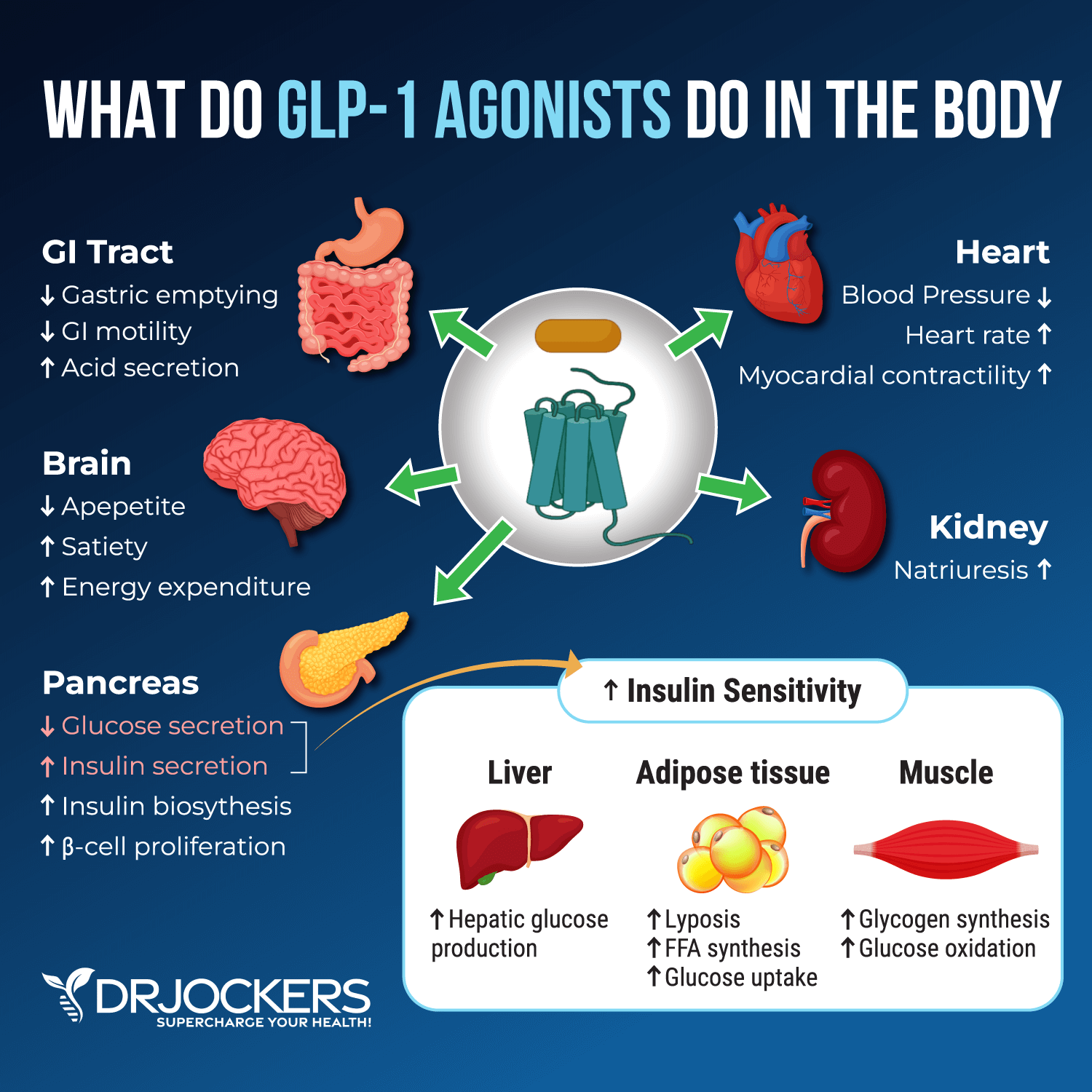
Researched Benefits of Ozempic
As I discussed, Ozempic was created to improve blood sugar in people with type 2 diabetes, in combination with diet, exercise, and healthy lifestyle strategies. According to a 2019 clinical review report by the Canadian Agency for Drugs and Technologies in Health, Ozempic may help to improve glycemic control (4). It may be used as the first line of therapy, second-line therapy in combination with metformin, or third-line therapy with metformin and sulfonylurea.
According to a 2023 study presented at the 59th EASD Annual Meeting of the European Association for the Study of Diabetes that Ozempic may be a long-term option for type 2 diabetes treatment (5). The study looked at 23,442 patients and followed them for 3 years while using Ozempic.
HbA1C measurements were taken 12 months before and 6 months after treatment began. Researchers found that patients lowered their HbA1C from 7.6 percent to 8.6 percent within 6 months, a 0.77 percent fall. They found a 0.77 percent fall at the 2-year mark and 0.44 after 3 years. They also lost 10 lbs on average within 6 months, 13.3 lbs weight loss after 2 years, and 12.9 lbs after 3 years.
This is not the only study that shows that semaglutide may help with weight loss. A study published in the New England Journal of Medicine of 2,000 obese adults compared people using semaglutide plus a diet and exercise program with people who made the same lifestyle changes without semaglutide.
After 68 weeks, half of the participants using semaglutide lost 15% of their body weight, and nearly a third lost 20%. Participants who incorporated only lifestyle changes lost about 2.4% of their weight (6).
A 2022 study published in JAMA Network Open has also found that semaglutide may be an appropriate treatment for overweight and obese individuals (7). They looked at 175 patients and found 5.9 percent weight loss after 3 months and 10.9 percent at 6 months.
Since obesity is a major underlying risk factor for cardiovascular issues, it may not be surprising that Ozempic shows some promise in that area as well. According to a 2023 study published in The New England Journal of Medicine, Ozempic may help with weight loss and benefit people with heart failure (8). It may help to reduce the risk of heart attack, stroke, and cardiac events (9).

Side Effects and Dangers of Ozempic and GLP-1 Drugs
Ozempic has some more minor and some more serious side effects (10).
Mild side effects of Ozempic and GLP-1 Drugs may include:
- Abdominal pain
- Constipation
- Diarrhea
- Burping
- Indigestion
- Acid reflux
- Headaches
- Dizziness
- nausea or vomiting
- Change in taste perception.
- Fatigue
- Redness, pain, discomfort, or discoloration at the site of the injection
Serious but very rare side effects of Ozempic and GLP-1 Drugs may include:
- Allergic reactions
- Gallbladder disease, including gallstones or cholecystitis.
- Kidney issues
- Pancreatitis
- Hypoglycemia
- Changes in vision or diabetic retinopathy
- Increased risk of thyroid cancer
There are active lawsuits going on now for several of these dangerous side effects including the Rybelsus lawsuit.

Safer Strategies for Fat Burning, Blood Sugar, and Weight Loss
Considering the potential risks, side effects, and dangers of Ozempic and other potential problems with its use for weight loss, you may want to consider some safer strategies for fat burning, blood sugar, and weight loss. Here are my top strategies for fat-burning, blood sugar, and weight loss:
Eat 30-50+ Grams of Protein in Each Meal
Diet is critical for fat burning, blood sugar, and weight loss. Of course, you want to focus on a nutrient-dense, low-carb, anti-inflammatory diet rich in greens, vegetables, herbs, spices, grass-fed meat, pasture-raised poultry and eggs, wild-caught fish, and wild game, which is, of course, critical for balanced blood sugar levels.
This is not enough, however. You need to pay attention to your macronutrient ratio if you want to keep your blood sugar balanced, burn fat, and lose weight the healthy way.
I recommend getting 30 to 50 grams of protein or more each meal. A 2021 study published in the Iranian Journal of Public Health suggests that paying attention to your macro ratio and eating protein with your meals may help to balance your blood sugar levels (11).
Researchers discovered. that participants with type 2 diabetes who were given a meal containing both carbs and protein had lower blood sugar levels after their meals than participants consuming carb-heavy meals. According to a 2022 study published in Women’s Health Reports (New Rochelle), consuming a diet of higher protein and lower carbohydrates may be better for the blood sugar levels of female participants with gestational diabetes (12).
Besides helping to balance your blood sugar, including lots of protein in your meals may help to reduce your cravings for sugar and unhealthy foods. This may lower the risk of overeating, binging, and reaching for healthy snacks.
It may also decrease your overall caloric intake. This may increase your chances of weight loss. Healthy sources of protein may include grass-fed beef, pasture-raised poultry and eggs, wild-caught fish, organ meats, wild game, seeds, and nuts.

Eat at Least 15-20 Grams of Healthy Fats in Each Meal
When you are paying attention to your macros, balancing your meals, and aiming to keep your carbs low, you can’t forget about healthy fats. You can’t forget about healthy fats, either. According to a 2020 meta-analysis published in Cureus, following a high-fat, low-carb ketogenic diet may help to improve fasting blood sugar levels, improve fasting insulin levels, support weight loss, improve cholesterol levels, and improve diabetes (13).
Another 2020 systematic review and meta-analysis published in Nutrition & Diabetes has also found that a low-carb, high-fat ketogenic diet may help with glycemic control, insulin resistance, lipid metabolism, and weight loss (14).
I recommend eating at least 15 to 20 grams of healthy fats with each of your meals. Healthy fats include avocados, avocado oil, olives, extra-virgin olive oil, extra-virgin coconut oil, coconut meat, coconut milk, MCT oil, wild-caught fish and seafood, grass-fed butter and ghee, flax seeds, chia seeds, and hemp seeds.

Avoid Processed Carbs and Naked Carbs
Though most of your diet should be comprised of healthy fats and clean protein, you can’t forget about carbohydrates either. Though you should keep your intake low, carbs have their places. The key is that they need to come from healthy sources, and you should not eat them by themselves.
Remember the 2021 study published in the Iranian Journal of Public Health I mentioned earlier (11). It found that consuming a meal containing both carbs and protein leads to lower blood sugar levels after meals than carb-heavy meals.
Avoid eating processed carbohydrates, such as cakes, pastries, cookies, bread, pasta, sugary cereal, candy, or ice cream. Avoid eating naked carbs. Naked carbs mean eating carbs without protein and fat on the sides, for example, eating potatoes or bread without much or any fats or protein.
When you eat carbs, make sure your plate is balanced, with mostly healthy fats and protein, with a little carbs on the side. This may mean a healthy portion of grass-fed beef with extra-virgin olive oil, olives, avocados, and a salad with vegetables.
Healthy carbohydrate sources include sweet potatoes, carrots, beets, and other sweet vegetables, and fruits. Ideally, choose low glycemic index fruits, such as berries, and lower glycemic index sweet vegetables, including peppers, tomatoes, and broccoli.
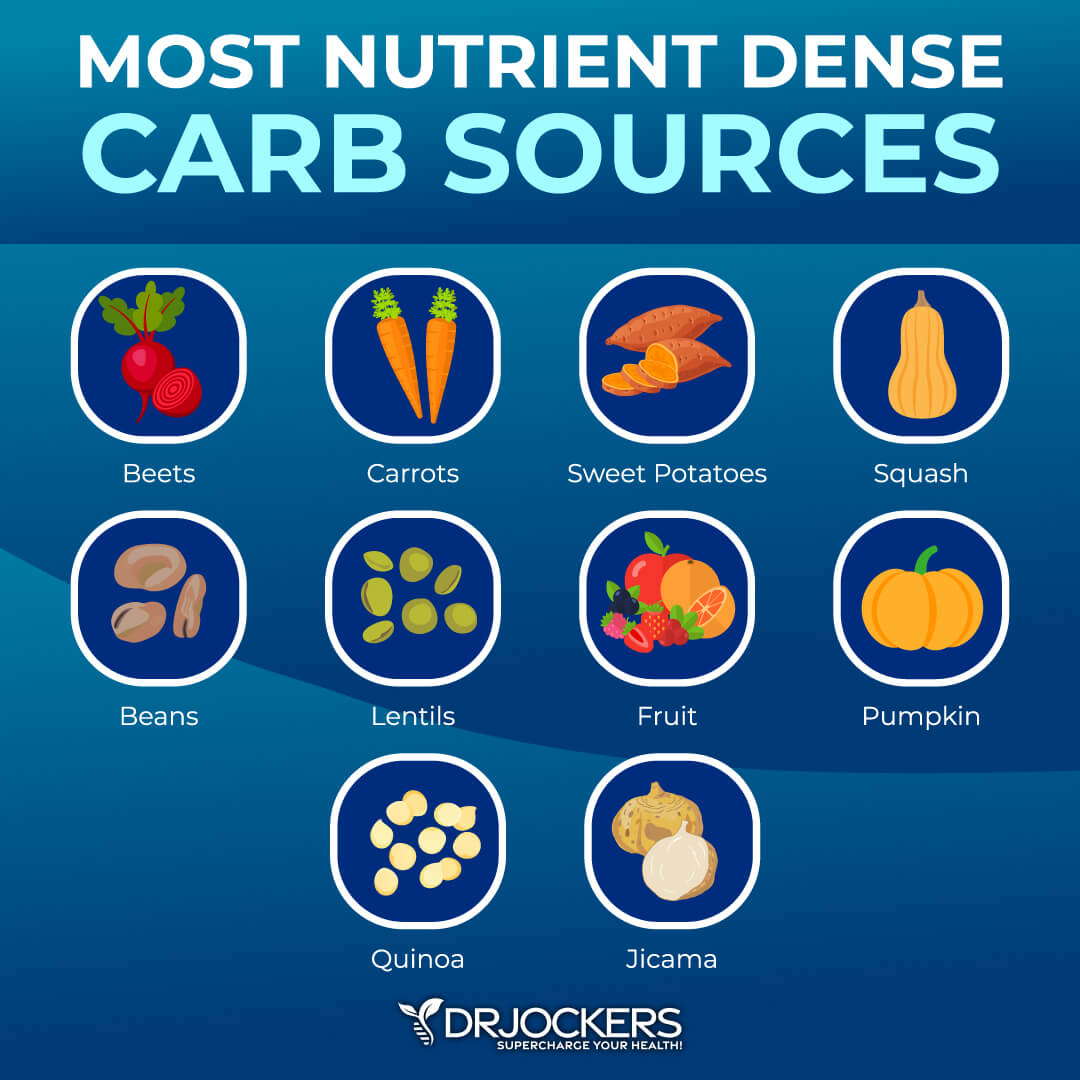
Go For a Walk After Meals
What you eat matters, but when and how you eat and what you do around your meals matters too. Going for a walk after your meals may help to balance your blood sugar levels and support weight loss.
A 2022 systematic review and meta-analysis published in Sports Medicine has found that even 2 to 5 minutes of walking after a meal may help to improve your blood sugar and cardiometabolic markers (15). 2017 research published in Frontiers in Endocrinology, it’s best to go for a walk within an hour of your meal because your blood sugar levels tend to spike about 60 to 90 minutes after eating (16).
It doesn’t have to be a long walk. Just going for 2 to 5 minutes can make a difference. However, if you can, I recommend a bit more. It can turn into a great family activity or activity with your colleagues at work to take a short stroll after lunch or dinner.
I also recommend moving around throughout the day to support healthy blood sugar levels. Going for a walk may also reduce the temptation to reach for some post-meal sweets or snacks. Incorporating movement during the day may reduce the risk of stress eating or snacking because you’re bored. Thus, it may lower the risk of overeating and may aid weight loss.
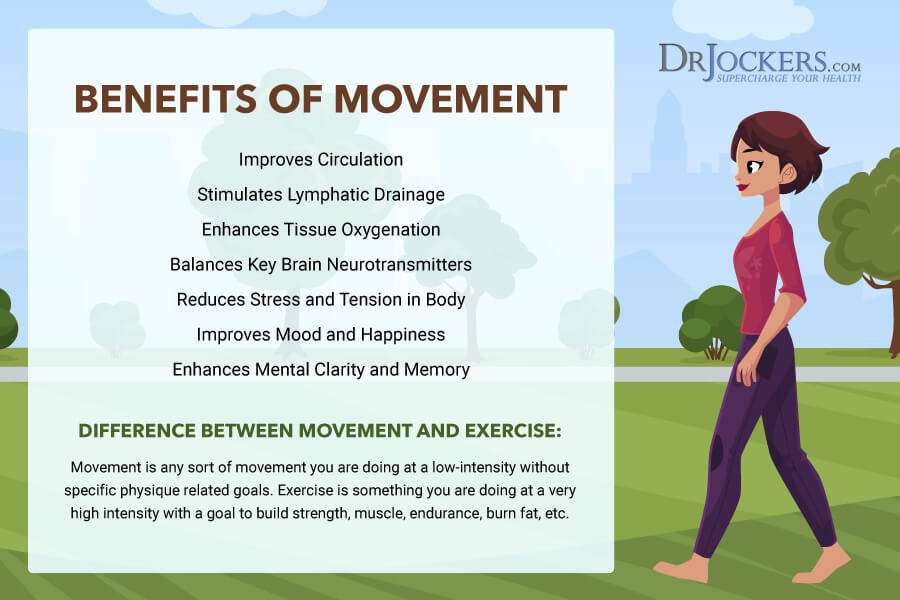
Eat Protein & Fiber Before Carbs
We already established that eating enough protein is critical, and while carbs should be a part of your diet, they should be kept low. We also talked about how combining carbs with protein may help your blood sugar levels. Fiber is just as important. In fact, eating protein first may also help with satiety, reducing carb cravings and overeating.
A 2014 study published in the Journal of Clinical Biochemistry and Nutrition has found that eating vegetables before carbohydrates may help with blood sugar levels and long-term glycemic control in patients with type 2 diabetes (17).
A 2020 study published in Nutrients has found that consuming fiber along with your meals, before eating carbs, may help to balance blood sugar levels and manage or lower the risk of developing type 2 diabetes (18). Moreover, vegetables are loaded with micronutrients and can nourish your body and decrease your cravings.
Use ACV or Lemon Juice with Meals
You may also try using apple cider vinegar or lemon juice with your meals. They may support blood sugar balance. According to a 2019 review and meta-analysis published in the Journal of Advanced Nursing, apple cider vinegar may have positive effects on blood sugar and glycemic control in individuals with type 2 diabetes (19).
A 2021 study published in the European Journal of Nutrition has found that lemon juice may also help to decrease the glycemic response after high-carb foods and meals (20). I recommend adding 1 tablespoon of apple cider vinegar to 8 oz of water or squeezing some lemon juice into your water. Drink this with your meals for improved blood sugar control.

Have MCT Oil with Meals
Following a diet higher in fat may help to improve your blood sugar balance. Eating lots of healthy fats is critical not only for blood sugar balance but also for your overall health (13). MCT oil is a fantastic source of healthy fats that may help to balance your blood sugar.
A 2019 study published in PLoS One has found that consuming MCT oil may help to improve blood sugar balance and insulin sensitivity (21). I recommend using MCT oil with your meals for improved blood sugar balance. At the end of this article, I will recommend a great MCT oil product.

Best Herbs and Nutrients for Blood Sugar
I also recommend some herbs and nutrients to support normal blood sugar levels.
Berberine
Berberine is a bioactive compound found in various plants species of plant species of the Berberidaceae family, including European barberry, Oregon grape, goldenseal, tree turmeric, and some other plants. It is yellow in color and bitter in taste. It has been used as herbal support to balance blood sugar, aid diabetes treatment, support weight loss, support heart health, decrease blood pressure, reduce cholesterol, improve liver health, improve burns, and for other uses.
Berberine has been touted as nature’s Ozempic. Let’s be clear, though. Ozempic is not the same as semaglutide. There are no studies or clinical trials comparing the two. However, there are several studies that have shown the benefits of berberine for blood sugar and weight loss.
A 2008 study published in Metabolism has found that berberine may help to reduce HbA1c levels in diabetes (22). According to a 2020 systematic review published in Biomedicine & Pharmacotherapy, participants lost an average of 4 pounds using berberine daily for 3 months (23).
According to a 2022 study published in JAMA Network Open, sumaglutide may lead to up to 12 percent body weight loss within 6 months (24). Though depending on the starting weight, Ozempic may lead to more weight loss, but it also has some serious risks. Berberine is a natural and safer alternative. You may benefit from supplementing with berberine for balancing your blood sugar (25).
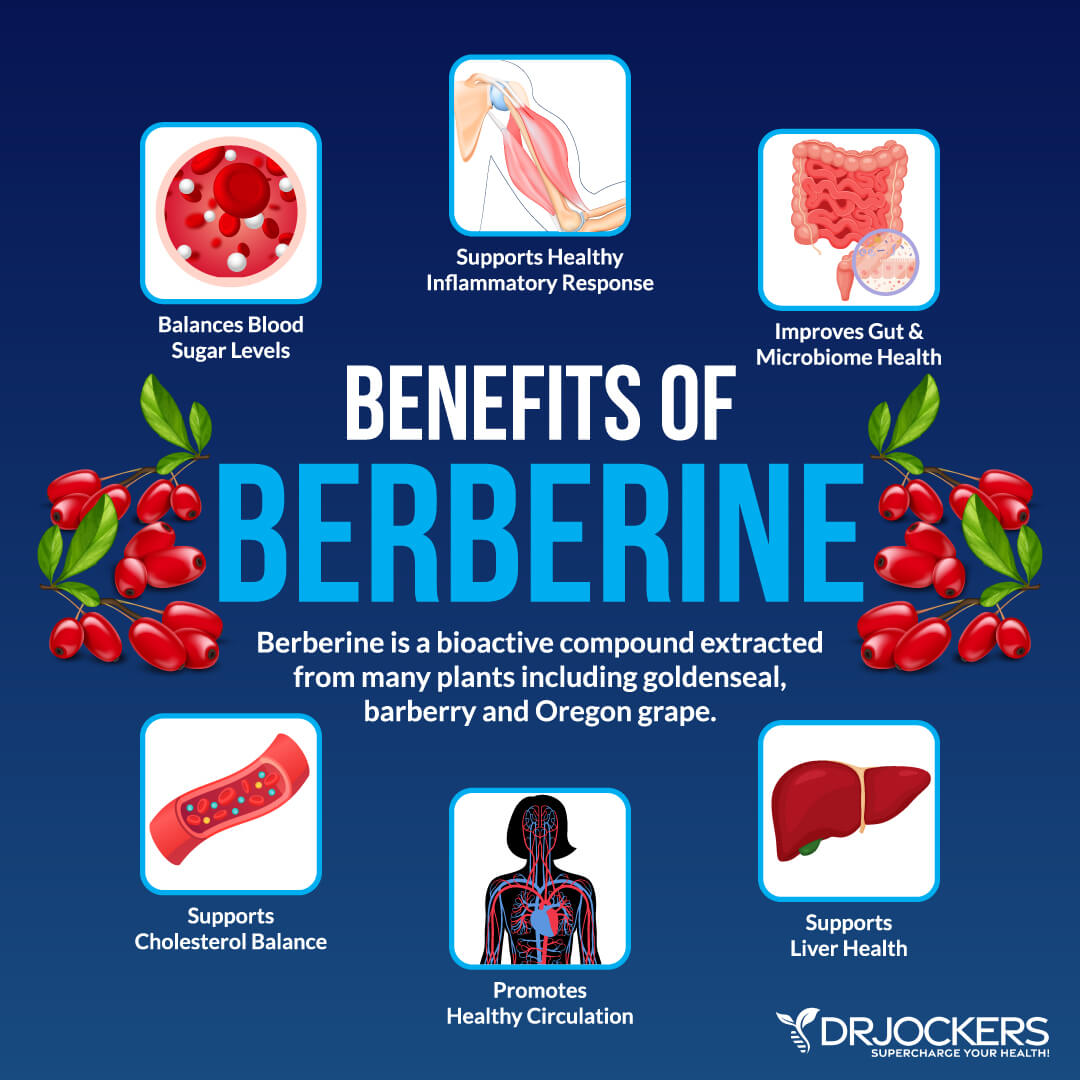
Cinnamon
Chances are, you already have cinnamon in your kitchen. You may not know that this simple spice is also full of anti-inflammatory and antimicrobial properties. It may also help to balance blood sugar.
A 2019 study published in the International Journal of Food Science has found that 3 to 6 grams of cinnamon may help to improve blood sugar levels in healthy individuals (26). You may use cinnamon in your cooking, including your meat dishes, sweet potatoes, apple dishes (raw or baked), and coffee. You may also benefit from blood sugar-supporting supplements with cinnamon.

Gymnema
Gymnema is a plant native to India and Africa. It is part of Ayurvedic medicine because of its many health benefits, including blood sugar control.
A 2010 study published in the Journal of Dietary Supplements has found that Gymnema may be effective for individuals with type 2 diabetes (27). You may benefit from supplementing with Gymnema for better blood sugar balance.

Fenugreek
Fenugreek is an herb that’s similar to clover. It is full of natural medicinal properties, including supporting blood sugar levels.
A 2015 study published in the Journal of Diabetes and Metabolic Disorders has found that fenugreek may help to reduce blood sugar in those with type 2 diabetes (28). You may try fenugreek as a seasoning, in sauces, and in vegetable dishes, as well as in a supplement form.

Chromium & Vanadium
Chromium and vanadium may also be effective natural supplements for blood sugar balance. Chromium is an essential trace mineral. A 2004 scientific review published in Diabetes Education has found that chromium may help to improve insulin resistance (29).
Vanadium is another chemical element that may have positive effects on blood sugar. 2016 research published in Food and Chemical Toxicology has found that vanadium may be beneficial for supporting people with diabetes (30). You may benefit from supplementing with chromium and vanadium.
I recommend Insulin Manager. This is an extraordinary combination of herbal and nutrient support for healthy glucose metabolism. It features concentrates of fenugreek, Gymnema, and bitter gourd, the addition of high levels of vanadium along with select B vitamins and the mineral, chromium.
This formula provides nutritional support for glucose and insulin metabolism and supports healthy blood lipid levels already within the normal range. From my clinical experience, Insulin Manager works quickly and powerfully to stabilize blood sugar and reduce inflammation.
Astaxanthin
Astaxanthin is a red pigment that gives the pink-red color of salmon and the color of certain algae. It is part of the carotenoid group. It is also a powerful antioxidant that may help to protect you from cellular damage.
It may also help blood sugar metabolism and benefit those with type 2 diabetes. A 2021 study published in Nutrients has found improvement in blood sugar after using astaxanthin supplementation for 12 weeks (31).
Researchers noted a significant reduction after 120 minutes of using 75 grams of OGTT compared to before using supplementation. They also found improved HbA1c and malondialdehyde-modified low-density lipoprotein levels. They noted it may be beneficial for those with prediabetes.
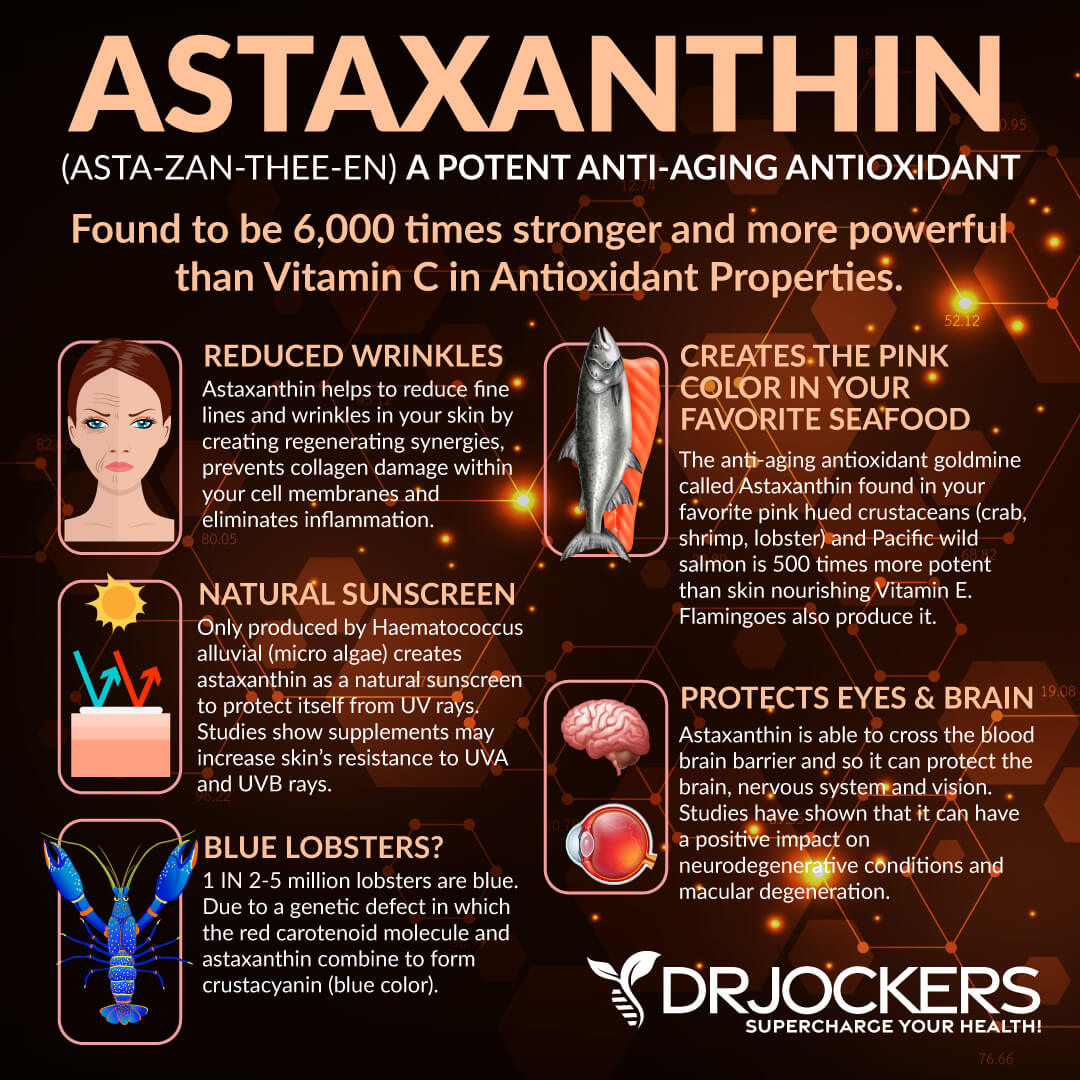
GCO
I recommend using a GCO blood sugar control supplement that helps to promote healthy blood sugar levels and metabolic function with herbal supplements and nutrients, including astaxanthin and berberine. GCO is formulated with nutrients and herbs — including astaxanthin, berberine HCL, cassia bark, and Masson pine bark — to support existing healthy blood sugar levels, metabolism, cardiovascular health, and digestive function.
GCO may behave similarly to Insulin-like growth factor (IGF-1), a key hormone essential to optimal wellness that naturally decreases with aging and chronic stress. IGF-1 reduces inflammation, supports immunity, and aids in digestion, energy production, muscle growth, and blood sugar metabolism.
During years of product development, these ingredients were precisely formulated in the needed proportions. Altering these ratios would render Gluco Optimizer less effective. Upon introducing GCO, allow about 3-4 weeks for the body to adjust to the product and experience optimal benefits.
GCO may help to support blood sugar balance, cellular function, digestion, cognitive and mental capacity, muscle mass, and heart health. Take 1 capsule twice daily or as otherwise directed by a healthcare practitioner. For best results, one capsule of GCO should be taken 30 minutes before meals, up to twice daily with morning and evening meals.
It is recommended to take all supplements at least two hours away from prescription medications. Upon introducing GCO, allow about 3-4 weeks for the body to adjust to the product and experience optimal benefits.
Sugar Support
I recommend trying Sugar Support for blood sugar balance. This supplement is ideal for supporting healthy insulin and glucose levels. This unique, synergistic formula combines standardized herbs and other botanicals that are shown to support healthy blood sugar through various mechanisms, including cinnamon, corosolic acid from banaba, isoflavones from kudzu, and ginsenosides from ginseng.
It also contains berberine (Berberis aristata), a compound highly regarded for its efficacy in supporting healthy blood glucose regulation and insulin sensitivity. As a dietary supplement, take four capsules per day with meals, or as directed by your health care practitioner (divided dosing recommended).
Due to its effects on blood sugar, consult with your health care provider before taking this product, along with medication for blood sugar or diabetes.
Keto Brain
I also recommend Keto Brain C8 MCT Oil. This C8 MCT Oil is extracted from natural sources using a three-stage steam-based filtering process without the addition of any chemicals. The result is a pure and ketogenic C8 (caprylic acid triglyceride) formulation.
Unlike long-chain fatty acids, medium-chain triglycerides (MCTs) are quickly converted into ketones and are less likely to be reserved as body fat. The result is improved mental performance and energy. Although C12 (lauric acid) is considered a medium-chain triglyceride, it behaves in the body like a long-chain fatty acid.
Some brands include up to 50% lauric acid in their MCT oil. Choosing an MCT oil with only caprylic acid will provide the greatest health benefits. MCT oil is very versatile and also heat stable up to 320 o F. Use it as a salad dressing or a thickening agent for coffee and teas. Add it to smoothies to help curb hunger and keep you satisfied longer.
Final Thoughts
Ozempic has been all over the news for now for its weight loss effects. Unfortunately, Ozempic has some potential side effects, risks, and dangers. It is not natural, and the results may not be long-term. Lifestyle, diet, and natural supplementation may be a more sustainable and healthier way to achieve blood sugar balance, weight loss, and fat loss.
I recommend following my favorite strategies for fat-burning, blood sugar, and weight loss. I recommend trying the best herbs, nutrients, and supplements in this article, blood sugar balance, and offer my favorite supplements.
If you want to work with a functional health coach, I recommend this article with tips on how to find a great coach. On our website, we offer long-distance functional health coaching programs. For further support with your health goals, just reach out—our fantastic coaches are here to support your journey.
Inflammation Crushing Ebundle
The Inflammation Crushing Ebundle is designed to help you improve your brain, liver, immune system and discover the healing strategies, foods and recipes to burn fat, reduce inflammation and Thrive in Life!
As a doctor of natural medicine, I have spent the past 20 years studying the best healing strategies and worked with hundreds of coaching clients, helping them overcome chronic health conditions and optimize their overall health.
In our Inflammation Crushing Ebundle, I have put together my very best strategies to reduce inflammation and optimize your healing potential. Take a look at what you will get inside these valuable guides below!







